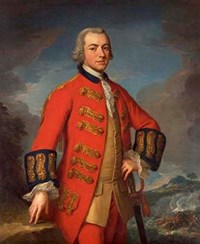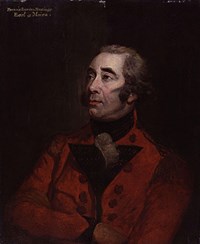- Minuteman Missile National Historic Site (14)
- Manhattan Project National Historical Park (11)
- Golden Gate National Recreation Area (10)
- Independence National Historical Park (10)
- Manassas National Battlefield Park (10)
- Grand Canyon National Park (9)
- Yellowstone National Park (9)
- Cuyahoga Valley National Park (8)
- Lewis & Clark National Historic Trail (8)
- Show More ...
- National Heritage Areas Program (5)
- National Register of Historic Places Program (4)
- Natural Resource Stewardship and Science Directorate (4)
- Inventory and Monitoring Division (3)
- Climate Change Response Program (2)
- Cultural Resources Program - Region 11 (2)
- Fire and Aviation Management (2)
- Geologic Resources Division (2)
- National Historic Landmarks Program (2)
- Show More ...
Showing 348 results for rotor wing ...
Old Faithful Inn
- Type: Place

Discover the Seaford Museum, a hidden gem in downtown Seaford, Delaware. Just steps from the Nanticoke River, this award-winning museum showcases the region’s rich history, from Harriet Tubman’s Underground Railroad connections to its maritime legacy. Explore interactive exhibits on shipbuilding and oyster shucking. After your visit, enjoy a scenic stroll along the River Walk, where Seaford’s waterfront industry stories come to life!
K-25 Gaseous Diffusion Plant
- Type: Place

The K-25 Gaseous Diffusion Plant was the largest building in the world during the Manhattan Project, longer than two Empire State Buildings laid side by side. The plant used the gaseous diffusion method, one of three methods the Manhattan Project used to produce enriched uranium. K-25 no longer exists. Visitors to the K-25 History Center are able to view the location where it once stood.
- Type: Person

Banastre Tarleton, a British army officer, famously commanded the British Legion, a provincial regiment composed of loyalist infantry and dragoons, in the southern theater under Lord Cornwallis during the Revolution. Feared for his ruthlessness by the patriots, his early successes in the field earned him notoriety. Defeated at the Battle of Cowpens by Brig. Gen. Daniel Morgan, Tarleton's favor with Cornwallis declined. Tarleton was present at the surrender at Yorktown.
- Type: Person
- Type: Person

Charles Cornwallis, 1st Marquess Cornwallis and 2nd Earl Cornwallis, served as a British general during the American Revolution and notably surrendered his army to General Washington's Continental army and the allied French forces at Yorktown, Virginia in October 1781. This surrender effectively ended hostilities between British and American forces and led to peace negotiations, ending the war and recognizing American independence. Cornwallis later governed in India.
Franklin Court Printing Office
- Type: Person

Charles Lee, former British Army officer, became the second highest ranking general of the Continental Army during the American Revolution. On June 28, 1776 he oversaw the victory at the Battle of Sullivan's Island in Charleston, SC. Two years later, his retreat on the field at the Battle of Monmouth Courthouse would result in his court martial and the end of his military career. Learn more about this controversial figure here.
- Type: Person

General Sir Henry Clinton, the longest serving British general of the American Revolution, served as commander in chief from 1778 to 1782. In the years after the Revolution, Clinton defended his actions in writing and felt unfairly labeled as the scapegoat for British defeat. He died in London in 1795 before he was able to assume the post of governor of Gibraltar.
- Type: Person

Francis Lord Rawdon, later Francis Rawdon-Hastings, Earl of Moira, was an Irish-Anglo army officer and politician, who served the British empire faithfully from service as a young man throughout the American Revolution through the French Revolutionary Wars, capping his career with a decade as Governor-General of India.
- Type: Place

In 1940 the federal government allocated funds for the improvement of Wright Field and to create the United States Army Air Corps. Wright Field participated in diverse military operations during World War II. Montgomery County residents joined in scrap drives, grew victory gardens, lived with rationing and blackout regulations, and served in civil defense programs. Today the community is home to a number of institutions that commemorate the home front.
- Type: Person

Artemas Ward was the first Commander-in-Chief of the Continental Army. His military service began during the French and Indian. Following this, he was elected to the Massachusetts Legislature. During the early period of the Revolutionary War, Ward commanded the entire Continental Army. Even after he resigned this position to George Washington, he continued to serve as an officer in the Revolutionary War. Ward later served in the Continental Congress and the US Congress.
- Type: Place
- Type: Person

When Jane Addams penned Twenty Years at Hull House: With Autobiographical Notes, she presented her life story as inextricably tied to her work in running a settlement house. Addams was born into an affluent family in Illinois, but comfort and leisure did not suit her. After spending much of her early life searching for outlets for progressive work, Addams became a reformer.
- Type: Place

Earl Hall, located on the campus of Columbia University in the New York City borough of Manhattan in New York, was listed in the National Register of Historic Places in 2018. Earl Hall is significant for its early and significant association with Columbia’s LGBT community. Columbia University was the first university in the United States to have a gay student group – the Student Homophile League -- founded in 1966 and officially recognized by the university in 1967.









